According to research by scientists, the scales of pangolins are made of keratin, a substance known for its extreme hardness and durability.
When it comes to creatures with the most robust defense systems in the animal kingdom, many people think of pangolins. Their small scales, although appearing fragile, are incredibly tough, making it difficult even for lions to easily break through them.
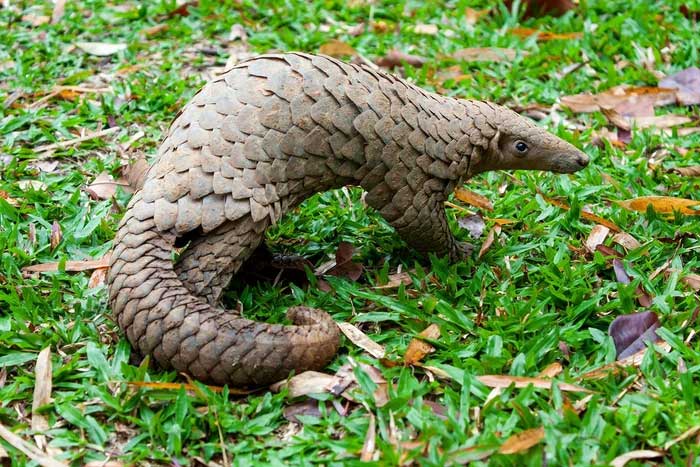
Pangolins live in hollow tree hollows or burrows, depending on the species, in tropical regions of Asia and Africa.
The Hardness of Pangolin Scales: Extraordinary Defense Capabilities
Research indicates that the scales of pangolins are composed of keratin, a material with remarkable strength and durability. The tight arrangement of these scales creates a protective armor that is virtually indestructible. Tests on hardness show that pangolin scales are harder than steel and can withstand pressure from various hard and sharp objects. For these reasons, pangolins are among the most well-defended animals in nature.
In fact, the scales of pangolins are not static shields; they are movable plates that interconnect, which is one of their unique protective measures. When threatened, pangolins quickly contract their muscles and roll their scales into a ball.
This curling behavior not only protects their vulnerable underbelly but also shields their head and limbs. This spherical shape provides excellent protection, allowing pangolins to counter attacks from predators and enhancing their chances of survival in dangerous situations.
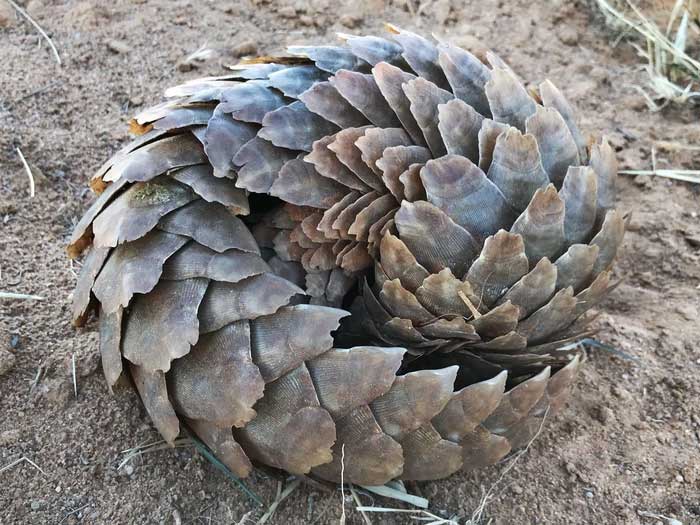
Pangolins are nocturnal, primarily feeding on ants and termites captured with their long tongues. During the day, they curl into a ball to sleep. They are typically solitary creatures, coming together only for mating and giving birth to one to three offspring, which they raise for about two years.
In addition to their hard scales, pangolins employ another unique skill to enhance their defense. When threatened, they quickly burrow into the ground, hiding themselves. Their strong and powerful forelimbs are particularly adapted for digging, enabling them to penetrate the soil in a very short time. Once a pangolin successfully hides underground, their chances of survival when faced with predators are almost 100%, as the soil provides additional protection.
However, despite their remarkable hardness and defensive capabilities, pangolins face numerous threats and dangers. Due to illegal hunting and habitat destruction, pangolins are experiencing a significant decline in population. The illegal trade of their scales and demand for medicinal purposes pose a severe threat to the survival of the pangolin species. Global warming and deforestation have also severely damaged their habitats, further deteriorating their living conditions.
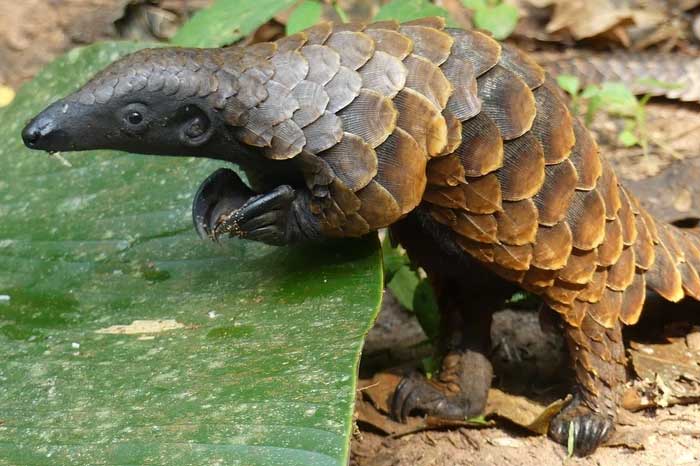
Pangolins are threatened by poaching (for their meat and scales, which are used in traditional Chinese medicine), and heavy deforestation endangers their natural habitats.
How Pangolin Scales Defend Against Lion Attacks
Pangolin scales are incredibly tough. They are composed of keratin, forming a rock-like armor. This makes the pangolin’s armor capable of resisting attacks from lions, including scratches from claws and bites from teeth. The dense and regular arrangement of the scales enhances their protection and prevents lions from finding weaknesses.
Pangolin scales are elastic. This elasticity allows the scales to bend under external forces and quickly return to their original shape. This ability makes it more difficult for lions to penetrate the scales during an attack, further enhancing the defensive capability of their armor.
Between the pangolin scales are short cartilage segments connecting them, designed to increase the overall flexibility of the armor. Such connections allow the scales to move relatively independently, enabling pangolins to walk and roll more freely, thus avoiding lion attacks.
Another key skill of pangolins is that when faced with a threat, they immediately curl up to protect their vulnerable belly. In this defensive posture, the scales completely encase the pangolin’s body, forming a solid spherical protective structure. This curled position further enhances the pangolin’s resistance, making it difficult for lions to find a weak point to attack.
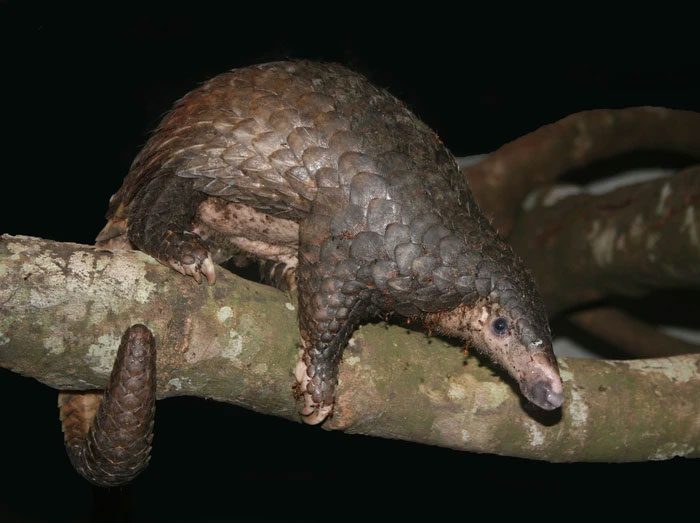
The pangolin’s body is covered with large keratin scales – a material similar to that of nails and claws, which protects and hardens their skin; they are the only known mammals with this characteristic.
The Evolution of Pangolin Scales
The evolution of pangolin scales provides them with a powerful defense mechanism. These scales consist of hard keratin, arranged to cover the entire body. They are robust and can effectively withstand attacks from predators.
Pangolin scales also possess remarkable adaptability. These scales can self-repair and can quickly regenerate even when damaged. This feature allows pangolin scales to adapt to challenges in various environments. Whether in grasslands, deserts, or dense forests, pangolin scales can fully utilize their defensive capabilities in different environmental conditions. This adaptability is key to the survival and reproduction of pangolins in diverse habitats.
Pangolin scales have also become a target for many hunters. Despite some progress in international pangolin conservation efforts, illegal hunting and exploitation persist, putting pangolins at risk of extinction. Pangolin scales are used in some Asian countries as a traditional medicinal ingredient and are believed to have therapeutic properties. This belief often leads to increasingly widespread trafficking, posing a severe threat to the survival of the pangolin species.
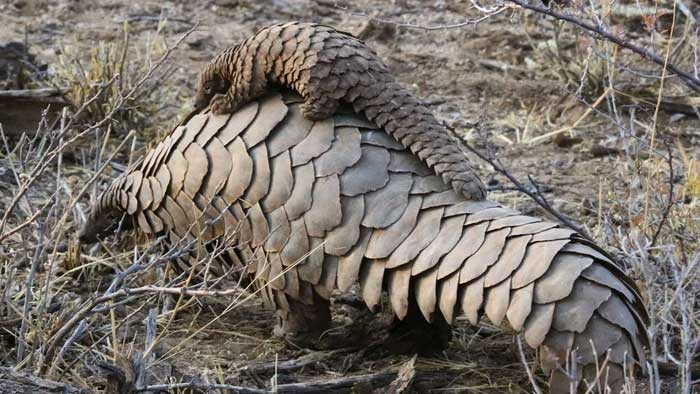
The entire body of the pangolin is covered with hard scales, overlapping like armor, leaving only the belly exposed. At birth, pangolin scales are soft but gradually harden as they mature.
Why are pangolin scales harder than those of other animals? There is still no clear answer. This question has become a hot topic in academic circles, with many biologists and material scientists grappling for explanations. Such remarkable sturdiness amazes observers with the ingenuity of nature.
Perhaps, with sufficient knowledge and technology, we can borrow the structure of pangolin scales to develop more durable materials for various applications.


















































